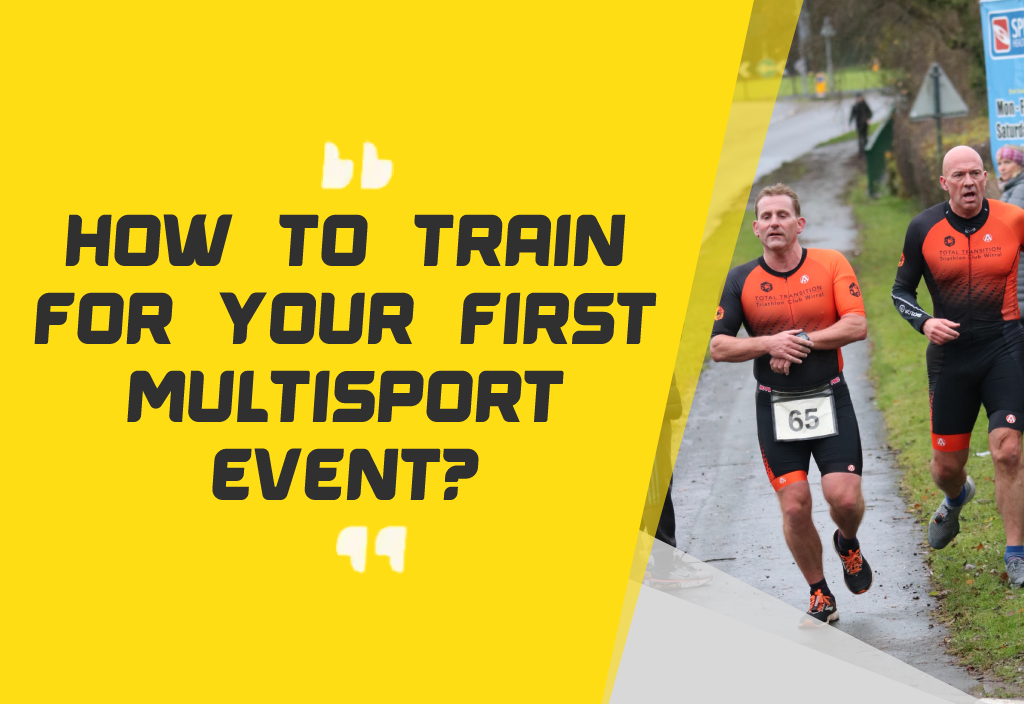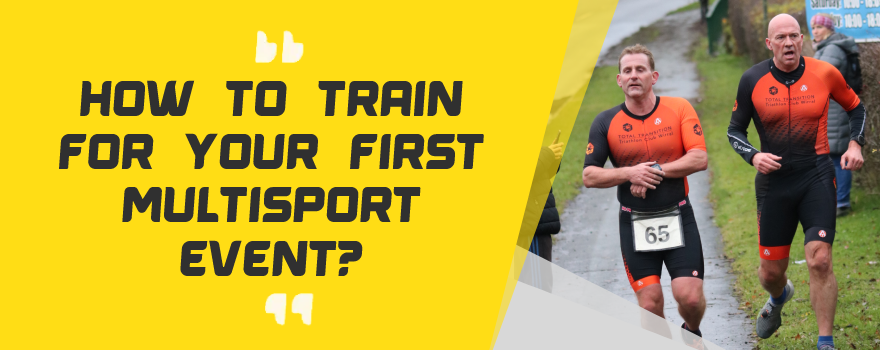
Training should always be undertaken at your own pace, knowing your own limits. All of the details in this article are set out to help you out and aid in your training to be able to take part in a multisport event.
If you are unsure of your own ability please consult a medical practitioner before starting any new training plan.
With that out of the way we hope you enjoy the article and get out of it exactly what you need to be able to enjoy the wonderful world of Multisport.
What is Multisport?
You’ve probably come across triathlons. You may have seen the Brownlees et al at the Olympics or heard of Ironman, the famous Iron War race of 1989 or Chrissie Wellington. But do you know how accessible multisport actually is? Do you know there are races virtually every weekend in the UK, there is probably a club on your doorstep and it’s not just swim, bike, run?
Multisport disciplines and distances available
| Multisport | Disciplines |
| Triathlon | Swim, Bike, Run |
| Duathlon | Run, Bike, Run |
| Aquathlon | Swim, Run |
| Aquabike | Swim, Bike |
Multipsport Discipline Distances
The main and most recognised amongst Triathlon is the Standard or Olympic distance which is 1500m swim, 40km bike, 10km run. As the distances get shorter, you can half the distances and longer, double them.
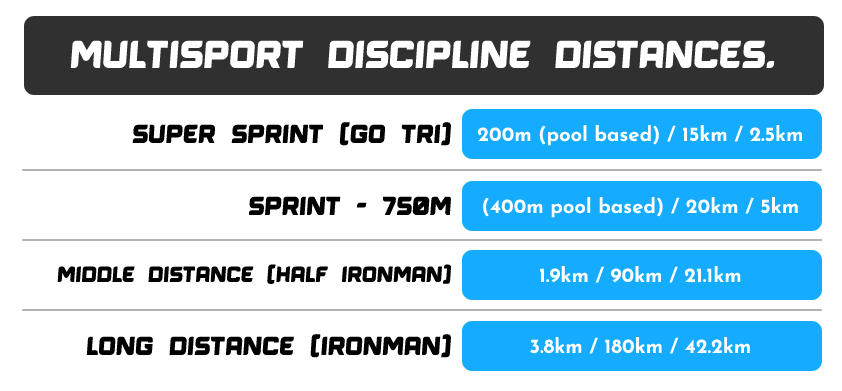
A lot of what I talk about in this article is aimed at beginners but is totally transferable. If you are training for a longer event, I would definitely recommend doing a little more research or speaking to a coach.
How to choose your first multisport event
Choosing an event is exactly the same as choosing your next pair of trainers. What I mean by that is you wouldn’t walk into a shop pick the first pair that your eyes see and buy them would you?
No. What you would do is think about what colour you would like, what size you will need, what activities you will be doing in them.
Choosing a multisport event is no different and there is lots to consider here too:
What type of event should I choose?
Lets keep it simple and (for now) Triathlon or Duathlon. We’ve stated the difference above so the only real choice here is do you want to get wet or would you rather stay dry? If you don’t want to get wet then choose Duathlon.
How far do I want it to be?
This article is about training for your first event so be sure to select an event and date that fits in with your training. In my opinion it’s best to start small and build your way up as we don’t want you injuring yourself.
However, this all depends on your starting level of fitness. If you are already very fit and just looking for a new challenge then you could probably opt for a longer race.
Most events will clearly state how long the event is so be sure to check this out and choose according to your current level of fitness or how fit you expect to be. Give yourself plenty of time to train if you are unsure.
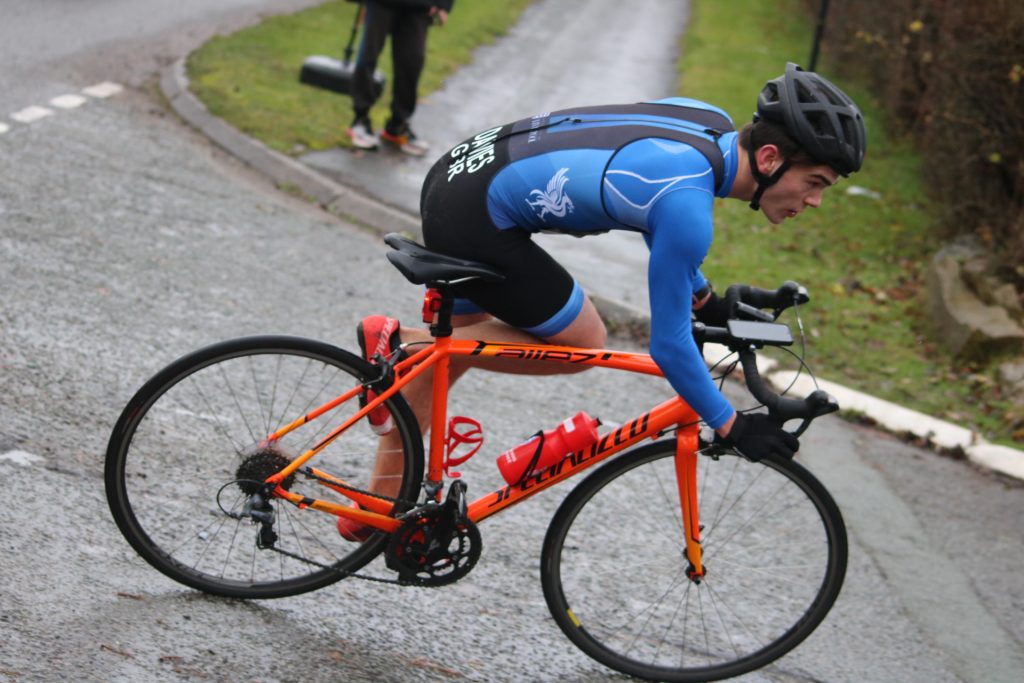
Do I want it to be competitive or friendly?
There are a lot of athletes who like all of their events to be competitive as they strive to be the best at what they do. Most multisport events wil at the very least time each participant and make the results public. What this means is that you can make any event you choose as competitive or non competitive as you like.
You are competing against yourself. If it’s your first time, get out there and get your first time in the bag. Once you have this you only have yourself to beat at your next one.
As you progress it’s then up to you if you want to start taking notice of other peoples times.
Do I need any special racing equipment?
As with most sports there is lots of equipment that you can buy and multisport events are no different depending on the discipline. For example with Triathlon at the very least you will need a bike, helmet, tri suit, bike shoes etc
As a beginner though most events will not require you to have all this and would certainly not want you to be put off by not having it. In most cases you will be able to race with a road safe bike and helmet and standard running gear.
If you are uncertain just ask the event organiser but we would be highly surprised if they insisted on you having all the required professional equipment to take part.
As you get more into your chosen sport though you will naturally want to get better which is when you will start to purchase more equipment.
GO TRI or Sprint that is the question?
As we’ve recommended airing on the side of caution for your first event our recommendation would be to choose a GO TRI or Sprint Event.
GO TRI is an initiative by British Triathlon to encourage participation in MultiSport, it’s what we specialise in here at MCA Fitness & Events. It’s all about creating opportunities and removing barriers. Limits on distances and entry costs to ensure the event is as accessible as possible.
A sprint distance is roughly half a standard, or Olympic, distance triathlon at 750m (open water) or 400m (pool) swim, 20km bike and 5 km run. A GO TRI event will usually be half that distance again at around 200m swim, 15km bike and 2.5km run. GO TRI’s will generally be pool based as well, which in turn requires subtly less training and equipment as you don’t have to learn to navigate the open water.
A GO TRI event is as competitive as you choose. Everybody will be participating for their own reason. It will not be a race as such, with no prizes, however the pointy end will always be “raced”. It’s an environment which is fun, friendly, accessible, and achievable. A GO TRI is an ideal first event. But that’s not to say a sprint distance isn’t suitable, it absolutely is, but because of the difference in distance, it will require a little more training and preparation and you should keep an eye on the course profile.
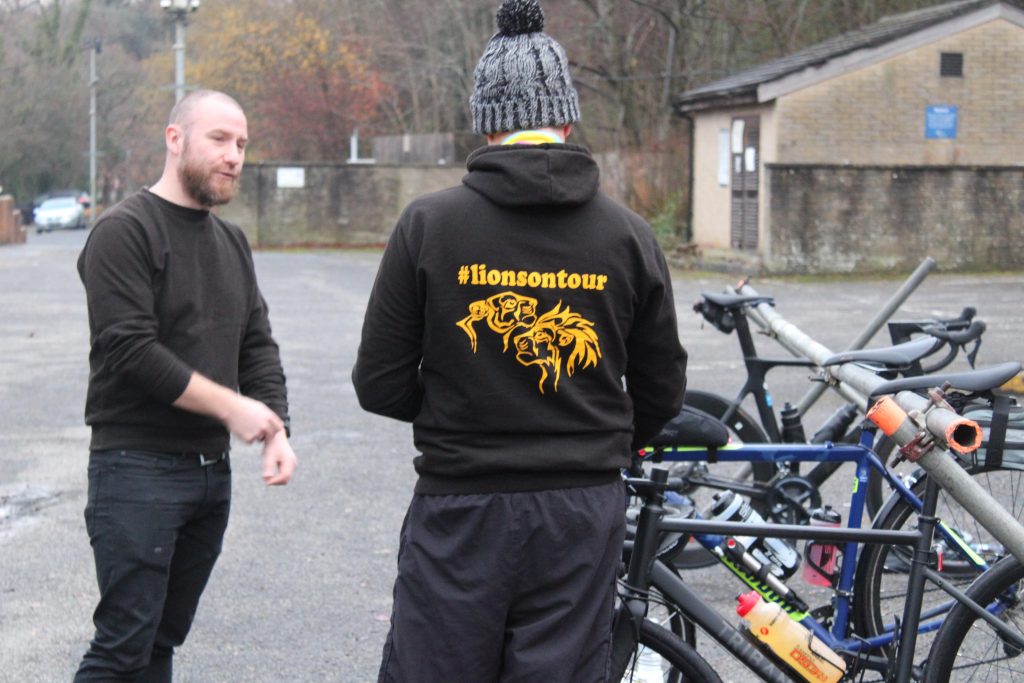
Triathlon, Duathlon or something else?
I’ll be honest here; it really doesn’t matter. Neither is more suitable for a beginner than the other (although I have already suggested you start with one of these), There are a couple more options.
The main advice here would be to play to your strengths. If you absolutely hate running and enjoy the swim, you may want an Aquabike event or a Triathlon, however if you can’t swim, or like me prefer to hit the weight room rather than the pool when you go to the gym, a duathlon is probably your perfect choice.
Choose the event that suits your strengths and interests for your first event. You’ll come across many people who tried a triathlon first, not knowing about the other options, but have since gone on to focus on Duathlon or Aquabike because it suits them better. If you’re at a fun, friendly event, your goal is to complete a new challenge and enjoy it. You can definitely specialise later.
So you’ve chosen your first event. The next thing you should do is look at your current fitness levels. If you’re a keen runner, you’re probably good to go with 3 weeks training, whereas if you’ve never competed in an event or in the middle of a Couch25k, an event further in the future i.e 12 weeks’ time may be better.
Under both circumstances, you’ll be able to complete the closer event, but what I would always encourage is that you ensure you’re confident in your fitness and are able to recover well.
The last thing we want is for you to feel like you’re not 100% ready when you’re on the start line or for you to suffer in the days following an event which may put you off multisport for life.
How to structure your training. Do you need a coach?
Coaches are an excellent tool. If you’ve never trained before, the Couch25k app can coach you to that distance, if you’re a regular gym goer, you may go to regular Spin classes or Circuits and use the teacher as your coach, or you might see a personal trainer once or twice a week. But now you’ve chosen to take part in your first duathlon/triathlon, do you need a multisport coach?
In short, a coach won’t hurt, but is absolutely unnecessary for your first event. Wait until you love the sport or you’re ready to be competitive either with yourself or the rest of your age group.
How to train without a Coach for your first Multisport event
Train At Your Own Pace
Just train to be honest… you won’t need to change much before your first event really. You know you have a 2.8km run, a 14km bike and another 2.8km run to complete, so I would ensure that running and riding are part of your week. You probably want to be able to comfortably run 5km before the event but it’s not essential. You can continue to weight train, take classes or swim, but please don’t neglect cycling and running.
That said, there is a way to optimise your efforts. You probably work, have a family and a social life, so you won’t be training for 30 hours a week. Your event will only last for 1-2 hours too, so such volume is really unnecessary. 2-4 sessions per week is absolutely adequate. The first thing to think about is factoring your lifestyle, fit your training in when you can. Don’t plan multiple hour bike rides, if it’s going to cause stress at another point.
30 minute sessions, increasing gradually to an hour or 90 minutes. Start with simple runs and bikes, you can do these indoor or outdoor, with the main goal to be for the training to get more similar to your event as it draws closer. You can do this by following your ride with a short 10 minute run (known as a brick session) or if you’re still hitting the weight room, you could warm up on the bike or try some intervals on the treadmill afterwards when you’re slightly fatigued. Either way, you’re still replicating the intensity of your duathlon.
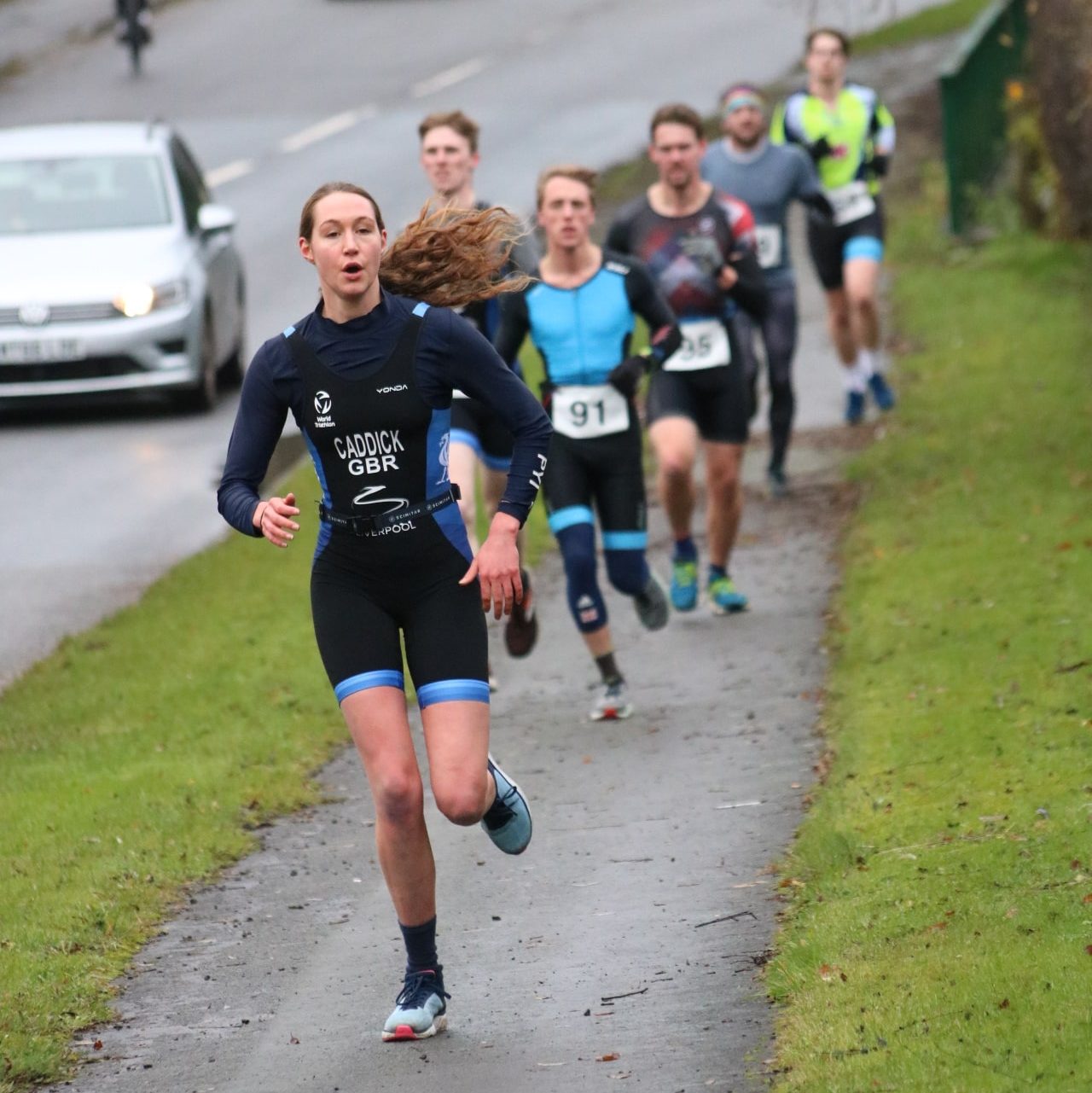
Brick Workouts
A brick session is usually a bike followed immediately by a run. There are many theories about why it’s called a brick, such as layering of disciplines, solid as a brick, but I understand they are named after World Duathlon Champion, Matt Brick, who made them famous in his use of them.
So a brick session doesn’t just have to be bike then run, it can be any combination of discipline, however most commonly bike then run, but sometimes swim, bike too. It also doesn’t have to be immediate, however your recovery time between the 2 should be short enough that it is still considered one session, for example you could ride in your full bike kit, put your bike away, get changed into your running kit and head back out after a few minutes.
Brick sessions are a great tool to have in your workout locker, particularly as you get closer to race day as these sessions are the ones that are closest in intensity to your race. I love how our GO TRI events are sometimes used as glorified bricks by more experienced competitors, as they simulate race day environment, multi discipline and race intensity, in a relaxed event.
The most common session is a hard bike, followed by a short, 10-20 minute run. Used primarily to get used to the jelly leg feeling of bike to run, but also a good opportunity to test your tired legs with a tempo push on the run.
Always include at least one full rest day
Fitness isn’t strictly how hard/fast/long you can go, in fact, a better indication is how well you can recover between sessions.
Therefore it is imperative that you utilise rest or recovery days. Now we’re beginners here and I’ve already discussed training just 3-4 sessions a week, so naturally that leaves 3-4 rest days also.
You may be an avid gym bunny or transitioning from a cycling background and including run and swim in your week too, so the number of sessions are not strictly limited by any rule, other than you need to be recovered for the next session.
If you’re training for a duathlon, i would recommend a 2 on, 1 off approach, for example,

You may find you want to train more than this or throw a weight session in too, in which case, you just need to think about your recovery. Don’t do a heavy leg session, the day before your hard run because you just won’t be able to perform. You may be able to do a heavy leg session on the same day, but after, an easy bike session. Then take a day or 2 off before an easy run. Your legs will be recovered and you’ll be able to perform for all your kms.
Get your pre and post race nutrition on point
You can’t out train a bad diet, but you also won’t perform if you’re under fuelled. It’s a fine line and careful balance. To put it simply, you wouldn’t get in the car, with an empty tank and expect it to drive you from Manchester to London, you’re going to need to fuel up before the journey. You’re then also going to have to fill up at the end when your tank is empty (think of your body for all non training time like an engine at idle, it’s still burning fuel)
The simple message is, fuel appropriately before, during and after
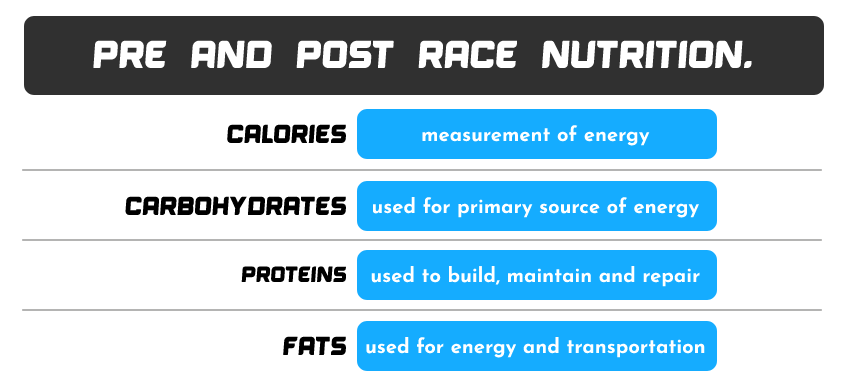
Before and after your meal, you should be ensuring a balanced meal. About 1-2 hours before you train (you’ll know your stomach better than i do), you should be looking at a Carb rich meal that will fuel your upcoming session, something like a small jacket potato with cheese or beans, or a tuna wrap with some fruit.
If you’re going to be training, or racing for more than an hour, you may want to include some sort of carbohydrate drink, gels or even sweets during your session to maintain consistent energy levels.
After your session, ideally within the following hour, a high protein and high carb meal or snack should be enough to replenish your energy and repair your muscles.
Same goes for race day, however with one golden rule, “Don’t Try Anything New on Race Day”
Hydration is key
When you do any sort of exercise, you’re going to sweat. Sweat is a combination of water and salt and losing either will impair your performance. Therefore, it is vital that you replace both. As a rule, 500ml of fluid for every hour of exercise as a minimum and the more intense, the more fluid required as well as some added salts and electrolytes.
In all honesty, fluid can be anything. Water is ideal, the perfect starting point and you won’t go wrong with it. Mineral water is even better as it’s been naturally filtered and still contains mineral elements which will aid with your hydration. If you want to add some flavour, lemon, orange, cucumber or even a dash of cordial won’t hurt, just watch the calorie and sugar content.
Talking of sugar, we’ve already discussed sugar and carbohydrates as a nutrition tool and it also aids your hydration. Every gram of sugar, holds onto 4 grams of water within the body, so if while you’re training, chugging down loads of water is a chore, or it sits on your stomach, then a small bag of chews or an energy gel is an ideal supplement as it kills 2 birds with one stone.
Finally we move onto actual supplements. Electrolyte tablets and powders and concentrated with salts and minerals that will help replace those lost through sweat and keep you topped up. (bonus tip, i have some n hand for before and after a night out to help with my hydration and recovery 😉 )
Ultimately water works, and you can use as many or as few alternatives as you like, but remember, if your goal is to shift a few pounds as well as do your first event, then litres of Lucozade may not be ideal. You want to stay hydrated and enhance performance while working to your goals.
Leave the Lucozade for before an intense session or race day and stick with water, cordial or electrolytes for the majority of your training.
Learn how to recover properly
Linked to both nutrition and hydration is recovery. You won’t perform or recover if you’ve got them wrong, but you can also enhance your recovery through other tools.
A hard threshold session on the bike, make sure you’re warmed up and ready, so spend 20 minutes riding easy with a few tempo and high cadence efforts thrown in so your body is ready for the session. This will help you perform in the session, avoid injury and help with recovery and make sure you do an active cool down as well, bring your body temperature and muscles back down before you jump off the bike.
Stretching, rolling, massage guns and massage treatment are all pivotal tools to assist your muscles in recovering from sessions. They are only part of the answer though, so don’t think pummeling your muscles in a hard session, then pummeling them with a foam roller will work, you have to listen to your body and give it what it needs. If you get tight in a session, stretch, increase the strength and flexibility in that muscle group. If your muscles feel sore a day or two after, try rolling or a massage gun, gently easing the muscles off. Physical recovery is about returning your muscles and body to its “normal” state from exertion.
Finally sleep. Going back to the definition of fitness and the body’s ability to receive, it would therefore make sense that fitness is often said to be built while asleep rather than during your training. Make sure you get to bed and have plenty of lie ins. Now work and kids will generally get in the way, but you can enhance this with good sleep hygiene. I’m not talking cleaning your sheets every day, but switching big lights off an hour or two before bed, limiting screen time in an evening, a few minutes spent meditating, writing in a journal or praying before bed, and generally trying to reduce stress, reduce your heart rate and preparing yourself for a good night’s sleep. I think the most important tip is to try and maintain a routine. Rest and wake at the same time each day, do the same thing in the hour before and after sleep and you’ll reap the fitness benefits of a deeper, more relaxed, less disturbed sleep.
Practice transition
The fourth and often overlooked discipline is transition. As with nutrition, you should not be trying anything new on race day. Therefore, you should at the very least have practised getting off your bike and running for a few metres. You should know how to rack your bike, what you’re allowed to bring into and what you’re not allowed to bring into transition. Multi sport is after all a multi discipline event and spending a few sessions in the weeks before your event getting used to switching sports, changing clothes and shoes and putting your helmet on in a rush, could be valuable and very worthwhile.
Most importantly though, enjoy the journey, embrace your training, look forward to your first event and if you end up choosing one of ours please come and say hi when you get there.

